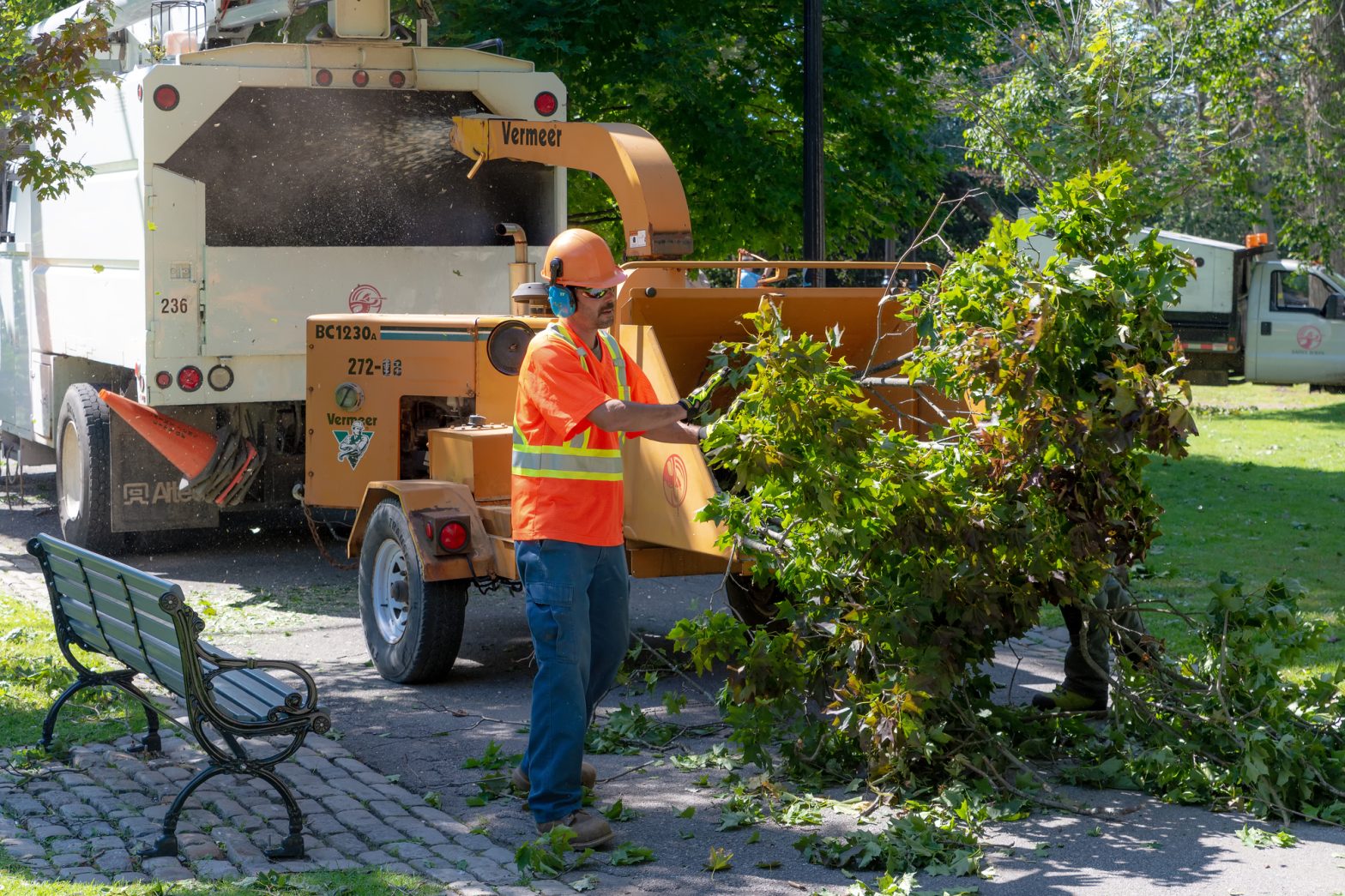
Tips for Cleaning Up Your Community After Storm Damage
In recent years, the increasing prevalence of extreme weather events has led to a surge in storm damage affecting communities worldwide. As climate change continues to exacerbate the intensity and frequency of storms, it’s become crucial for communities to develop efficient and effective strategies to recover from the aftermath and clean up the affected areas.
Prioritise Your Protection
Prioritising your protection and safety is paramount when cleaning up after a storm. The aftermath of a storm can present various hazards, including downed power lines, unstable structures, and contaminated floodwaters.
To minimise risks, take the following precautions during the cleanup process:
• Equip yourself with personal protective equipment (PPE), such as gloves, sturdy boots, long-sleeved shirts, long pants, and eye protection. Consider wearing a mask or respirator if you work in a damp or mould-prone environment.
• Stay alert and avoid hazards like broken glass, exposed nails, and slippery surfaces. Keep a safe distance from downed power lines and report them to the utility company immediately.
• Take breaks and stay hydrated while working. Overexertion can lead to injuries or heatstroke, especially when working in hot and humid conditions.
• Working in teams can help ensure that tasks are completed more efficiently and safely, as team members can watch out for each other and provide assistance.
• Floodwaters can displace wildlife, making it more likely for you to encounter them during cleanup efforts. Be cautious when moving debris, as animals may be hiding or trapped underneath.
• Mould can grow quickly in damp environments, potentially causing health problems. Wear a mask, respirator, and gloves when cleaning mouldy areas, and ventilate the space.
• Storm cleanup often involves handling sharp objects and debris, increasing the risk of cuts and puncture wounds. Make sure your tetanus vaccination is up to date to prevent infection.
• If you smell gas or hear a hissing sound, evacuate the area immediately and contact your gas company or the fire department. Do not use open flames or electronic devices in the vicinity, as they could ignite the gas.
With these safety precautions, you can proceed with the cleanup process, knowing that you and your community are protected.
Utilise Your Resources
Collaboration is crucial in the aftermath of a storm, as it allows communities to pool resources, share responsibilities, and support one another during recovery. Forming a team can help ensure that cleanup efforts are conducted efficiently and safely while fostering unity and resilience among community members.
Here are some ways to form a team and find help for storm cleanup:
• Start by connecting with your neighbours and discussing the need for a coordinated cleanup effort. Neighbours can help each other by sharing tools, resources, and expertise and providing emotional support during difficult times.
• Many communities have volunteer groups, such as religious organisations, youth groups, and service clubs, willing to help with disaster relief efforts. Reach out to these groups to request assistance and coordinate their involvement in the cleanup process.
• Contact local government agencies. Emergency management office or public works department can provide valuable resources and support during storm cleanup.
• Use social media platforms to connect with other community members and recruit volunteers.
• Collaborate with local or national nonprofit organisations, such as Disaster Relief Australia, that provide disaster relief services and resources to affected communities.
• Reach out to local businesses for support. They may provide equipment, supplies, and financial assistance and help mobilise their employees to volunteer in the cleanup efforts.
• Host community meetings to discuss cleanup plans, share information, and recruit volunteers. This can also serve as a platform to address concerns, answer questions, and provide updates on the progress of recovery efforts.
• Set up a central location where volunteers can gather, receive assignments, and access resources such as tools and safety gear.
• Contact local media outlets to help spread the word about the need for volunteers and resources.
Any of these resources can help supplement the efforts of individuals and families working to clean up and rebuild after a storm.
Make a Plan and Assess the Damage
Assessing the damage and creating a plan of action is a critical first step in the cleanup process after a storm. A well-organised plan will help to ensure that resources are used efficiently and tasks are prioritised.
Here are some tips for formulating a plan:
1. Conduct a safety check.
2. Document the damage.
3. Inspect building structures.
4. Assess utility systems.
5. Prioritise tasks and assign responsibilities.
6. Develop a timeline for completing tasks.
7. Communicate the plan to all involved parties.
8. Monitor progress and adjust as necessary.
Once you have a solid plan, your team can proceed with the cleanup process.
Get the Right Equipment
The right equipment is crucial for successful and safe post-storm. The appropriate tools and protective gear will help protect individuals from hazards and make the process more efficient.
This includes but isn’t limited to:
1. PPE: This may include sturdy gloves, safety glasses or goggles, long-sleeved shirts, and long pants, waterproof boots with steel toes and non-slip soles, and masks or respirators.
2. Vacuums: Wet-dry vacuums remove water and debris from floors, carpets, and furniture.
3. Dehumidifiers: Dehumidifiers reduce moisture levels in the air, preventing the growth of mould and mildew.
4. Pumps: Submersible pumps remove standing water from flooded areas, such as basements, crawlspaces, and yards.
5. Fans and blowers: High-velocity fans and blowers are useful for drying out damp areas, promoting air circulation, and reducing the risk of mould growth.
6. Trash bags and containers: Heavy-duty trash bags and containers for collecting and disposing of debris, damaged items, and other waste.
As for sourcing these items, check local hardware stores, home improvement centres, and rental shops for availability and pricing. Likewise, local government agencies, nonprofit organisations, and volunteer groups may have equipment available for loan or at a reduced cost.
Follow Proper Disposal Protocols
Following proper disposal protocols is crucial during storm cleanup to ensure the community’s safety, protect the environment, and comply with local regulations. Utilising skip bins can significantly streamline the cleanup process by providing a designated space for disposing of debris and waste materials.
Choosing the right size bin is essential to ensure you have enough space for debris and waste materials to be removed. It can also speed up the process by eliminating multiple trips back and forth between your location and the disposal facility. Be aware of hazardous materials not permitted in bins to avoid violation fines.
Salvage Reusable Materials
Salvaging reusable materials after a storm can help to reduce waste, promote recycling, and save money. By carefully assessing the condition of furniture, appliances, and other items, you can determine which items can be cleaned, repaired, or repurposed.
Furniture and appliances in good condition can be donated to local government agencies, nonprofit organisations, or volunteer groups. Likewise, broken furniture can be disassembled, used for parts, or repurposed into something new.
Additionally, wood, metal, bricks, and blocks can be salvaged from damaged structures and reused elsewhere. Similarly, scrap metal can be recycled at local facilities or sold to recycling businesses.
Respect Your Environment
Respect for the environment is essential during storm cleanup. This includes being mindful of wildlife and not disturbing habitats, keeping noise levels to a minimum, avoiding dumping debris in waterways or wetlands, and disposing of hazardous materials properly.
Likewise, be aware of your surroundings when using heavy equipment, such as chainsaws and generators. Take extra precautions to keep bystanders out of harm’s way and protect nearby trees, buildings, and other structures.
Being considerate to your neighbours during a storm cleanup can make a big difference in the overall effort. This may include setting up flagged boundaries around work zones or using signs to alert people that construction is occurring. Additionally, be aware of noise levels and limit loud tools and machinery to reasonable hours.
Inform The Authorities
Reporting fallen trees, powerline damage, and other potential hazards to the authorities is necessary to ensure safety and facilitate recovery. Timely reporting enables the authorities to address these issues more efficiently and helps prevent accidents.
A good list of contacts to have includes:
• Local public works department;
• City or county parks department;
• Local utility companies;
• Fire department;
• Local transportation department;
• City or county road maintenance department;
• Building inspector or code enforcement office.
Ultimately, having the right plan and following proper protocols can make a massive difference in storm cleanup. Remember to prioritise safety, respect the environment, and involve the authorities for the best results.






